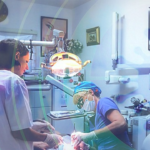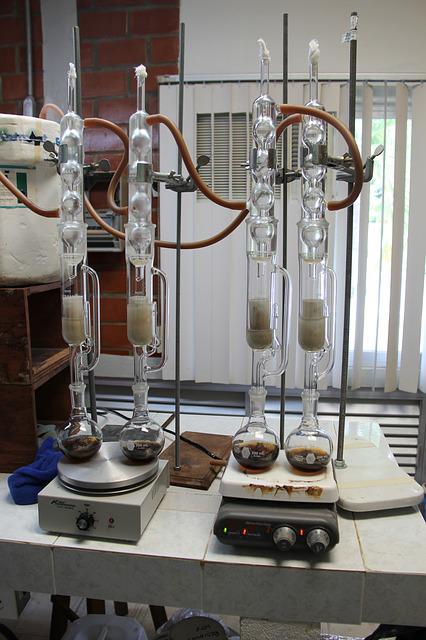Travis Hughes had been assured by both mentors and peers that he was a front-runner for a super-competitive dermatology residency: He had a double degree from Harvard University, experience as a clinical scientist at a health tech startup, and a CV with nearly 40 publications and four patents. Still, during Match Week in March, he failed to land a residency slot, along with 7.1% of fourth-year medical students in the U.S.
While many in his position were upset, Hughes said he was relieved. His part-time job at a startup had nudged him toward industry. The push from the Match was all he needed to set out on this new path. Now, he could forgo the long hours and low pay of residency for a comfortable lifestyle in industry.
From the start of medical school, Hughes had dreamed of eventually founding a biotech company that could sell low-cost drugs, devices, and diagnostics, while he practiced medicine to inform his industry work. His vision to transition from academic medicine to industry put him in good company. Of 2,969 new recipients of a Ph.D. in the life sciences surveyed in 2020, 43% reported that they had committed to a job in industry or business — a 10-point jump from 2015, according to the Survey of Earned Doctorates, administered by the National Center for Science and Engineering Statistics. Only 37% reported they would continue down the academic path — a 9-point decrease from 2015.
advertisement
With both an M.D. and a Ph.D., Hughes is one of those graduates set on a departure from academia. His story provides a window into why so many others have made the same choice.
After dinner one evening in 2020, Hughes’ wife, Melany Park, newly in her third trimester of pregnancy, said she had an upset stomach. When she went to the bathroom, she realized it was more serious: She was losing blood fast, after her placenta, which had nourished her fetus, had broken off from the inside of her uterus. Park was rushed to the hospital for an emergency C-section, and at 29 weeks, their daughter Isla was born prematurely. She spent the next two months in the intensive care unit.
advertisement
Park and their daughter have recovered, but the medical crisis changed how Hughes viewed residency, and how to balance his career ambitions with his family. Isla needs a roster of specialists, including a neonatologist and an occupational therapist, who help ensure that she meets her childhood developmental milestones. So Hughes narrowed his selection for residency to five programs near their home in Massachusetts and in other cities with appropriate early childhood services and where his wife could find work as an architect.
Hughes with his wife, Melany Park, and their daughter Isla. Courtesy Travis Hughes
He knew he was taking a risk, especially as a candidate for dermatology, a specialty that nearly 20% of U.S. applicants fail to match into. But now in his mid-30s, with a wife and child to support at home, if he couldn’t do residency on his own terms, Hughes was fine with not going at all. “The Match system forces desperation in people,” he said. “I didn’t want that lack of control.”
Hughes applied to medical school because he wanted to make a direct positive impact on a person’s life. As a boy, he watched his father care for his grandmother, who struggled to breathe as emphysema destroyed the airways in her lungs. After he earned his master’s degree, in need of a job and a place to live while he applied to medical school, Hughes became an in-home caregiver himself after he responded to an advertisement on Craigslist, posted by a man with multiple sclerosis. In the second year of his doctorate program, Hughes reprised that role, this time with Park, his then-fiancée: At Harvard, they lived with and cared for Jack L. Strominger, a renowned immunologist.
UPCOMING EVENT
Connect with today’s innovators & tomorrow’s thought leaders
We’re hosting events nationwide (and virtually) to tackle the biggest questions in health and medicine. Browse our upcoming events to see what’s on the horizon.
That same desire to help others was what drove him to embark on the long and grueling road of medical training. During his first year at Harvard, he worked in a lab that developed Seq-Well, a cost-effective, portable way to analyze gene expression in cells. With all the tools he needed in a black Pelican case, he traveled to South Africa, the first of many countries on six continents that he would visit to share the technique, which helped galvanize scientific research, especially in places with limited resources.
Inspired by that work, he decided to pursue a doctorate degree in immunology on top of a medical degree. Hughes was encouraged by Strominger to pursue “big” science questions that fascinated him — like how the immune system fights tuberculosis, or how cells mutate in metastatic cancer.
Hughes said that while he enjoyed his time in the lab, fatigue set in: He spent long hours refining lab techniques, writing papers, and traveling to share research globally. As he wearied in the latter phases of his Ph.D., he heard of a company called nference, a local health tech startup. He applied and got a job as a clinical scientist there to help support his family during medical training. “It was a breath of fresh air,” he said.
He found he was drawn to industry, more so than to working in academic medicine. He felt a weight off his shoulders when he thought of a life free of hustling to publish research, win grants, and earn academic promotions. In exchange for 80-hour work weeks as a resident physician, he envisioned being home to see his toddler grow up. He considered, as well, that an industry salary would provide a far more livable wage: For an entry-level position, he was offered more than four times the median salary of a resident.
“Money feels more straightforward, compared to the currencies of authorship, attribution, and credit in academia,” said Hughes. In addition, the startup felt team-oriented in a refreshing way. He was especially pleased that the mission of his work, which uses AI to analyze health records, aligned with what motivated him to apply to medical school in the first place: to improve care for patients.
Related:
Health systems are using machine learning to predict high-cost care. Will it help patients?
When the news came on the third Monday of March that Hughes had not matched into residency, he felt no pressure to scramble for leftover spots. He was offered an empty position for a clinical scientist at a dermatology residency on the West Coast, but he turned it down. He said he would have felt selfish if he had picked up his family and moved them to the opposite side of the country. He thought of the two paths before him. In industry, he felt he still could make a positive impact that would aid the work of frontline health care workers, and he still could pursue scientific questions that were challenging and exciting. So he chose to transition to a full-time role as a clinical scientist at nference.
For Hughes, no door remains closed, but he says he would be hard-pressed to apply to residency again. He recently caught up with Strominger, both a mentor and the recipient of his care. Uncertain of how Strominger would react, he told him that he planned to pivot to industry. Now retired from working in the lab, Strominger gave his blessing to Hughes for the next step in his journey.
Even in his 90s, you could still find Strominger in the lab, asking new research questions, looking at slides under a microscope, and having his eyes light up when he learned something new. He had a storied career: He won the Lasker Award in 1995 and trained directly or by lineage most of the immunologists at Harvard.
But for Hughes, “that sort of career just never felt like exactly what I wanted,” he said. “Now, I have an opportunity to rethink my life and help others re-envision their path as well.”









